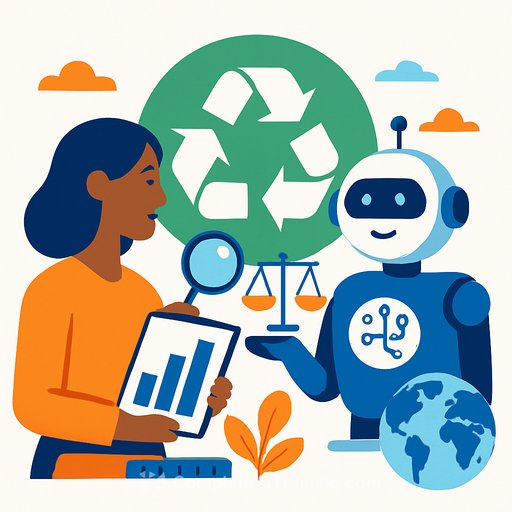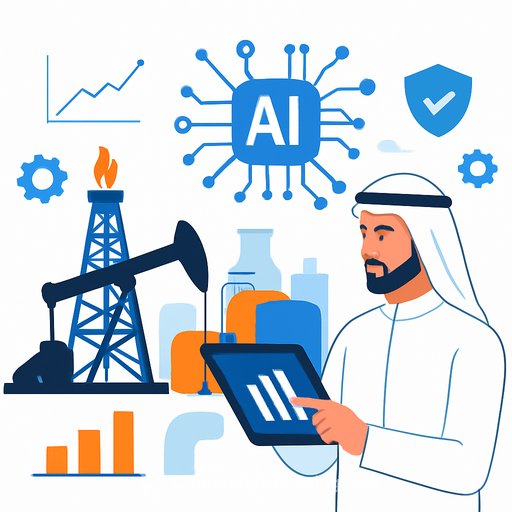Managing AI's environmental impact: a leadership playbook
AI is accelerating, and so is its footprint. Gartner predicts AI will account for 50% of IT greenhouse gas emissions by 2028, up from about 10% in 2025.
Executives can't treat this as "just an energy issue." Water use, supply chain emissions, e-waste, and opaque vendor reporting can derail sustainability targets and budgets. The fix: measure precisely, design for efficiency, demand transparency, and invest in community benefit.
Measure what matters
Start with a baseline and track change. At the estate level, monitor PUE, WUE, IT equipment utilisation (ITEU), and waste before and after AI deployment to see the true delta.
For model-level insight, move beyond aggregate energy bills. Use component-based analysis (hardware, software, data lifecycle, water, energy), software-based emission trackers, and AI energy scores. Quantify scope 1 and 2 first, then add scope 3 supply chain emissions.
- Define boundaries: training, fine-tuning, inference, storage, networking, cooling.
- Instrument workloads: telemetry for GPU/CPU, memory, power draw, run-time, and queueing.
- Adopt a standard: the Green Software Foundation's SCI can guide measurement and reduction (GSF SCI).
- Use recognised metrics: learn PUE/WUE to contextualise facility efficiency (DOE on PUE).
- Report monthly: model-by-model emissions, water use, and cost per unit of business value.
Demand transparency across the AI supply chain
Opaque vendor disclosures are a risk. Bake sustainability into procurement and contracts so you're not flying blind.
- Require per-workload emissions estimates (training and inference), grid region, and energy mix.
- Ask for WUE, water source (potable vs. reclaimed), cooling method, and peak water draw.
- Request hardware bills of materials, embodied carbon, and recycling/reuse rates.
- Set SLAs for data export of energy and water telemetry; include audit rights.
- Prioritise vendors with third-party assurance and science-based targets.
Reduce impact by design
The biggest lever is efficiency. Build and buy models that deliver outcomes at the lowest compute and water cost.
- Right-size the model: prefer small, specialised models over general LLMs for focused tasks (e.g., code assist, classification).
- Use efficient techniques: retrieval augmentation, distillation, pruning, quantisation, and sparse architectures.
- Optimise inference: batching, caching, request timeouts, early exit, and adaptive routing.
- Re-use before you train: fine-tune or prompt-tune pre-trained models instead of training from scratch.
- Track "emissions per outcome": grams CO2e and litres of water per ticket resolved, claim processed, or lead qualified.
Place workloads where they're cleanest
Cloud can be great, but not every workload should go there by default. Evaluate options case by case with real data.
- Compare regions by marginal grid carbon intensity and renewable availability.
- Use providers with clear renewable procurement, hourly matching, and transparent WUE.
- For steady inference, consider on-prem with efficient cooling and local renewables if telemetry proves lower impact.
- Time-shift non-urgent training to low-carbon hours; location-shift to greener regions.
- Co-locate with heat reuse opportunities to offset community heating demand.
Manage water and community impact
Community resistance can stall AI growth. Treat social equity as a design requirement, not an afterthought.
- Adopt water recycling and consider adiabatic or liquid cooling with reclaimed sources.
- Implement heat recovery to serve nearby buildings and industry.
- Fund local renewable projects and grid upgrades; improve access to clean energy.
- Publish a community impact report: water draw, peak demand, heat reuse, emergency protocols.
- Establish community benefit agreements and local e-waste recycling partnerships.
Governance and incentives
What gets measured gets managed; what gets rewarded gets done. Set clear ownership and targets.
- Assign an AI sustainability owner with budget authority and board oversight.
- Set model-level thresholds for emissions and water per transaction; block deployments that exceed them.
- Introduce an internal carbon and water price into AI business cases.
- Tie a portion of executive and product team bonuses to reduction targets.
- Disclose through CDP and annual ESG reports with external assurance.
90-day action plan
- Baseline PUE, WUE, ITEU, and waste; start model-level telemetry for top 5 AI workloads.
- Publish procurement requirements for emissions, water, and hardware disclosures.
- Swap general-purpose LLMs for smaller specialised models on two use cases.
- Schedule training jobs to low-carbon hours in cleaner regions.
- Draft a community impact statement and scope a heat reuse or water recycling pilot.
Upskill for efficient AI
Teams need skills to choose lean models, instrument workloads, and read the metrics. Build a culture where engineers and product owners optimise for emissions and water, not just latency.
- Create internal playbooks for model selection, quantisation, and telemetry.
- Offer targeted training for product managers and engineers on efficient AI deployment. Explore role-based AI learning paths at Complete AI Training.
The management takeaway
AI's footprint spans energy, water, hardware, and community impact. Leaders who measure precisely, set hard guardrails, and bake sustainability into design will scale AI without sacrificing ESG commitments or social licence to operate.
This isn't about slower innovation. It's about smarter innovation that compounds value and resilience over time.
Your membership also unlocks:






